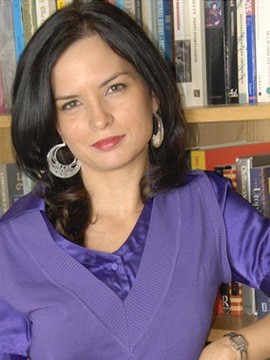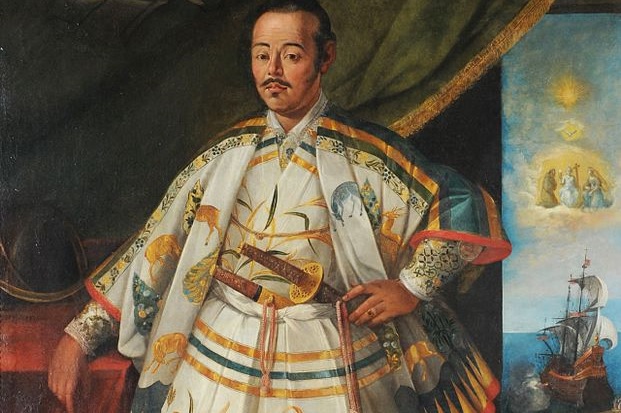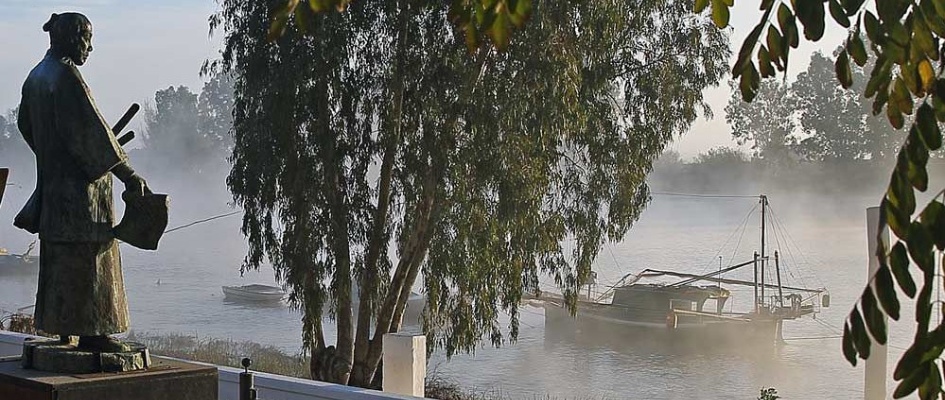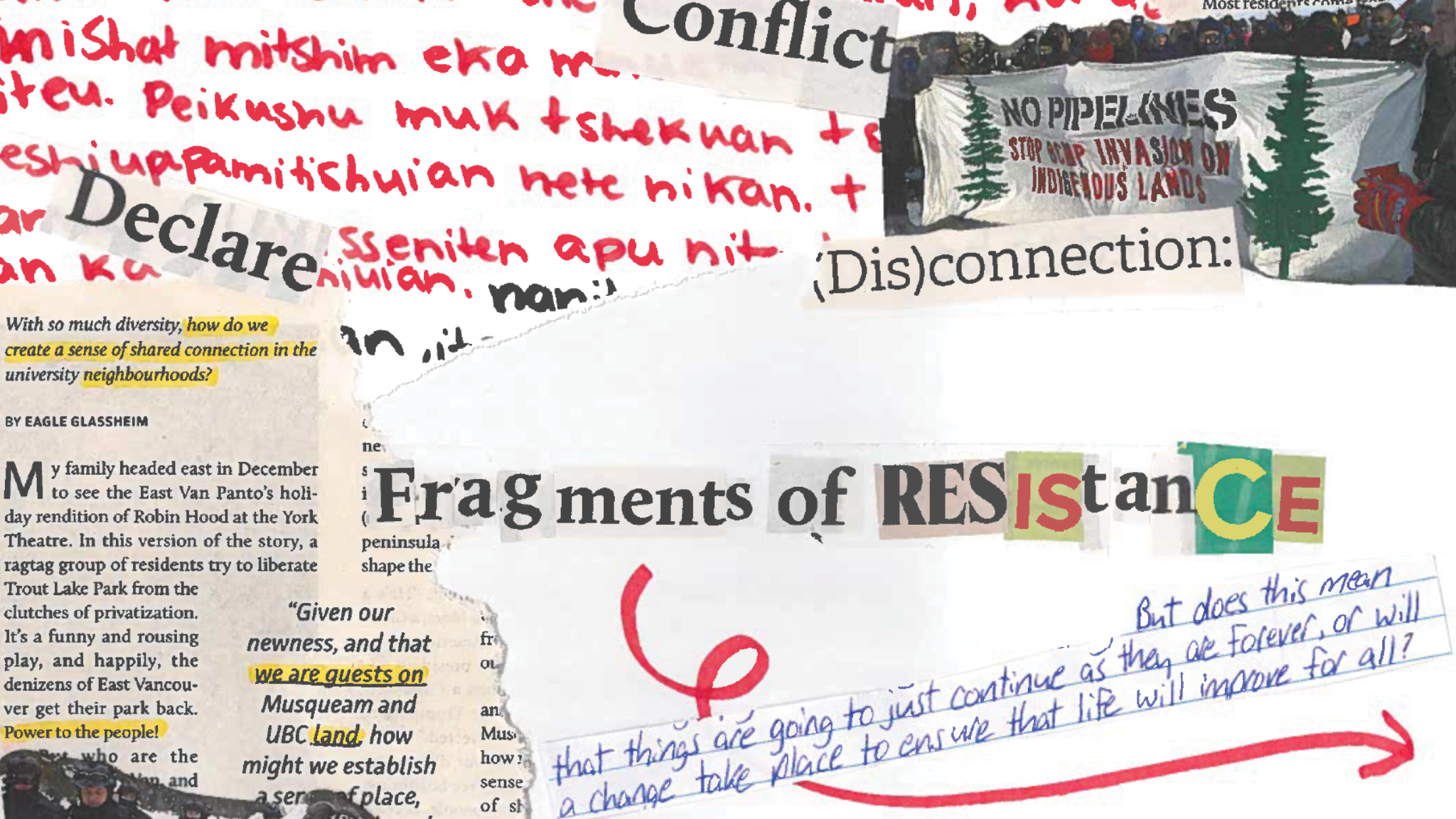Dr. Kim Beauchesne, Associate Professor of Hispanic Studies at UBC, offers a decentered perspective on the cultural contacts between Asia, the Americas, and Europe in her latest research.


Hasekura Tsunenaga in Rome (1615) by Claude Deruet, held at the Borghese Gallery
“My research will offer a decentered and global perspective that challenges Eurocentrism and allows for a comprehensive knowledge of the world.”
Research


Dr. Kim Beauchesne, Associate Professor of Hispanic Studies at UBC
My project, titled “Bridging Transatlantic and Transpacific Studies: The Keichō Embassy and its Textual Representations in the Hispanic World (17th and 21st Centuries),” will examine both early modern and contemporary narrative texts produced mainly in Mexico and Spain about the Keichō embassy. This Japanese-Spanish expedition, led by the samurai Hasekura Tsunenaga, sailed from Japan in 1613, reached New Spain (Mexico), and then went on to Spain and Italy — in order to establish trade relations with King Philip III and meet Pope Paul V — before returning to its starting point in 1620.
On the one hand, this event is historically important because it strengthened the links between Asia, the Americas, and Europe, thus providing rich material for considering the formation of global histories during that period. On the other hand, it is also significant in today’s context because a spectrum of recent literary and artistic works — including Spanish-language novels, documentaries, animated films, and monuments in Hispanophone countries — suggests an enduring interest in this diplomatic mission and its impact on Hispanic cultures.
In broader terms, my research aims to advance our understanding of the network of cultural contacts between Asia, the Americas, and Europe that occurred in the 17th century and are still relevant today.
This approach, which is often neglected in studies about the Spanish empire mostly concerned with transatlantic exchanges, will offer a decentered and global perspective that challenges Eurocentrism and allows a comprehensive knowledge of the world, in the past and the present.


Hasekura Tsunenaga in Rome (1615) by Claude Deruet, held at the Borghese Gallery
Approach
Borrowing from a variety of theoretical and critical works on early globalization and its aftermath (by Jürgen Osterhammel and Neils P. Petersson, Serge Gruzinski, Tatiana Seijas, among others), my project is twofold.
First, I will analyze how cultural interactions are portrayed through rhetorical mechanisms (recurrent tropes, allusions, lexical fields, and so on) in three 17th-century writings: Relación (Account, 1614) by the Spanish scribe Alonso Gascón de Cardona; Diario (Diary, 1615) by the Nahua historian known as Chimalpahin; and Relación verdadera (True Account, 1616) by the Spanish Franciscan friar Luis Sotelo. I am also interested in investigating how these texts share similarities (and differences) with the depiction of ‘the Other’ in the Spanish chronicles about America — for instance, the ‘noble savage’ and potential Christian devotee seems at the same time less docile than how Amerindians were sometimes represented.
Second, I will study how the following 21st-century Spanish novels rewrite — in a serious, mocking or ambivalent manner — 17th-century sources to address the challenges of today’s globalized world: El insólito viaje del samurái Hasekura (The unusual trip of samurai Hasekura, 2013) by the notary public and writer José María Sánchez-Ros; Rōnin (2013) by the novelist and pilot Francisco Narla; and Sol en Keicho (Sun in Keicho, 2015) by the author and industrial draftsman Francisco Muñoz de la Rosa.
I feel truly privileged that, thanks to the SSHRC Insight Grant, I will have access to valuable versions of the selected texts and other related manuscripts — some of them part of the UNESCO Memory of the World Register — at specialized archives and libraries in Mexico and Spain, such as the National Library of Anthropology and History in Mexico City, the General Archive of the Indies in Seville, and the Municipal Archive of Coria del Río. I should add that although I will draw from the expertise of Asian studies scholars at the University of British Columbia to refer to documents of Japanese authorship (by the shoguns Ieyasu and Hidetada, for example), I will not focus on them since they have already been the object of numerous publications.
Insights
I believe the works under study — each within its own sociohistorical context — shed new light on the multiple facets of globalization.
More concretely, while the 17th-century writings complicate our understanding of the cultural contacts taking place in that period, the 21st-century novels seem to demonstrate the need to revisit them. It is interesting to note that most of these texts challenge the contemporary commemorations of supposedly idyllic Japanese-Spanish relationships originating with the Keichō embassy, among other expeditions.
For instance, Japan’s Crown Prince Naruhito visited Coria del Río, Spain, in June 2013 to honour Hasekura and the diplomatic ties he built there. That same year, the Spanish Ambassador Miguel Navarro, when participating in the 400th anniversary of bilateral exchanges in Fukushima, Japan, claimed that the two countries have had a long interaction devoid of any conflict. These idealized viewpoints obviously silence the frictions that have led to the successive edicts promulgated to prohibit Christianity in Japan since the 16th century and that may certainly be detected in my corpus.
However, I wish to dig deeper and develop my insights by asking the following research questions: When ‘the Other’ is described, does the topic of racism come up? Was the intercultural dialogue truly mutual? How do portrayals of the embassy’s allegedly peaceful reception in Mexico and Spain differ? How exactly do 21st-century narratives refer to the earlier versions? And how does each author specifically deal with the complex concept of globalization?
Impact
The notions highlighted in this project — such as intercultural connections and the challenges of globalization — are still of the utmost importance in today’s world. Indeed, the links that I will study between Asia, the Americas, and Europe are still extremely strong, as evidenced in the lively Asian communities in Latin America and the group of inhabitants of Coria del Río who identify themselves as descendants of members of the Keichō embassy. This cultural hybridity is also an integral part of Canadian society. For instance, at the University of British Columbia, many international students from Asia, the Americas, and Europe greatly enrich the intellectual life of the institution and the city of Vancouver.
At the scholarly level, my research project will strive to make an innovative contribution to Hispanic studies, both in Canadian universities and abroad, by bringing together transatlantic and transpacific studies — two areas that are often considered separately.
In more general terms, it has the potential to question set boundaries between disciplines and draw together specialists from different departments, units, and programs (the UBC Departments of French, Hispanic and Italian Studies, History, and Asian Studies, as well as the Asian Canadian and Asian Migration Studies Program).
In addition, it will lead to many scholarly initiatives. For example, I will create an academic blog with the help of research assistants and organize a symposium, tentatively titled “Cultural Networks: Encounters Between Transatlantic and Transpacific Studies, From Past to Present,” that will be open to all. The ultimate outcome of this project will be the publication of a book, which may attract not only scholars in various fields but also the larger public — basically anyone interested in the history of cross-cultural contacts and its legacy.


A statue of Hasekura Tsunenaga in Coria del Río, Spain
Acknowledgements
I would like to thank all those who provided me support while I was preparing my grant application: my Department — including colleagues and friends — as well as Pam Forsberg (Arts Grant Facilitator), Danica Kell (SSH Research Development Officer, SPARC), and Christina Laffin (Associate Professor and Canada Research Chair, Asian Studies).
———
Dr. Kim Beauchesne is a recipient of the Insight Grant by the Social Sciences and Humanities Research Council (SSHRC), which enables scholars to address complex issues pertaining to individuals and societies, and to further our collective understanding.
Learn more


